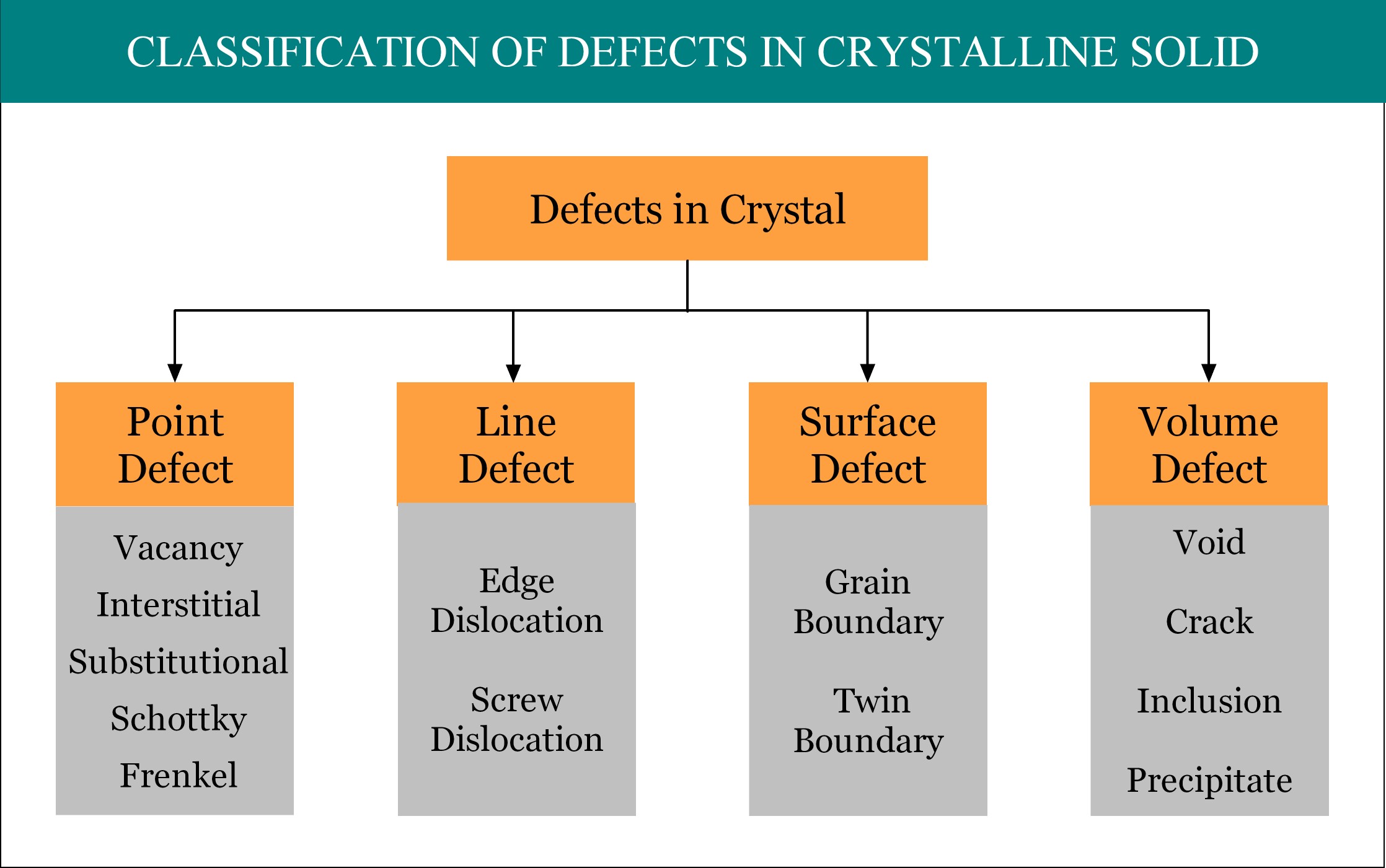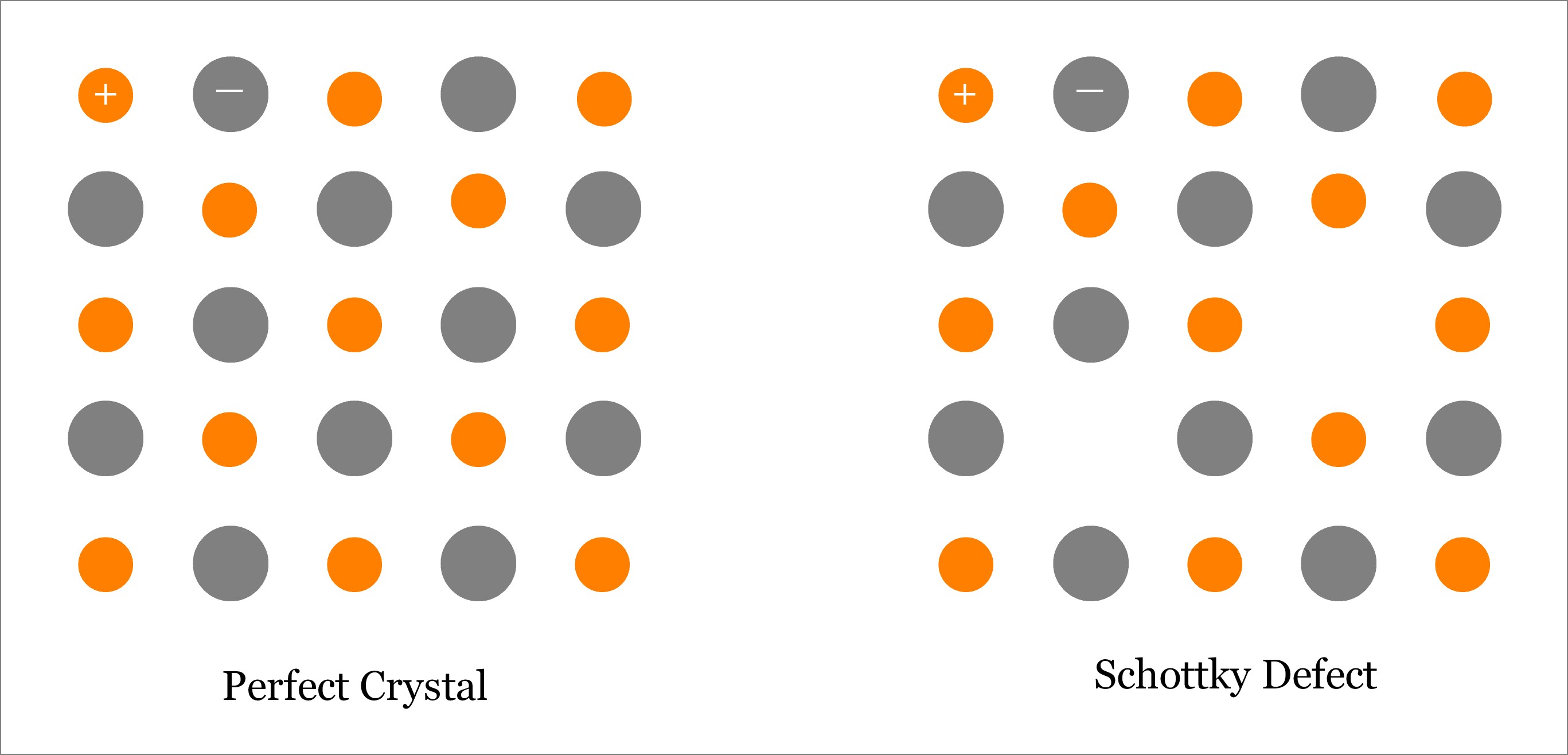Imperfections or defects in crystalline solid can be broadly classified into four groups, namely, point defect, line defect, surface defect and volume defect. Point defect is considered as the zero dimensional (0-D) defect, as by mathematical definition, a point is unit-less dimensionless quantity! A point defect occurs when one or more atoms of a crystalline solid leave their original lattice site and/or foreign atoms occupy the interstitial position / lattice site of the crystal. There are several types of point defects and Schottky Defect is one of them.

What is Schottky Defect?
It is one type of Point Defect that occurs in ionic crystals. Schottky defect occurs when oppositely charged atoms (cation and anion) leave their corresponding lattice sites and create a pair of Vacancy Defects. Since both cation and anion leave the lattice sites at the same time, so overall electrical neutrality of the crystal is maintained; however, density reduces because of the vacancies.

Example of materials where Schottky defect can be found:
- Sodium Chloride (NaCl)
- Potassium Chloride (KCl)
- Potassium Bromide (KBr)
- Silver Bromide (AgBr)
- Cerium Dioxide (CeO2)
- Thorium Dioxide (ThO2)
Features of Schottky Defect:
- Schottky defects occur in ionic crystals where the size of anion is almost same with the size of the cation.
- One anion and one cation leave the crystal at the same time to create Schottky defect. None of them occupies the interstitial site again.
- One Schottky defect leads to the formation of two vacancies.
- Electrical neutrality of the whole crystal is maintained.
- Density of the crystal decreases for Schottky defects as vacancies are created.
Difference with Frenkel Defect:
- Although both—Schottky and Frenkel defects occur in ionic materials, Frenkel defect occurs if size of anion is quite large as compared to that of the cation; whereas, Schottky defect occurs if the difference in size between cation and anion is small.
- In Frenkel defect, only the smaller ion (cation) leaves its original lattice site; whereas, the anion remains in corresponding lattice site. However, in Schottky defect, both cation and anion leaves the solid crystal.
- Unlike Frenkel defect where one atom shifts from original lattice site to the interstitial position, in Schottky defect two atoms leave the solid crystal. So one vacancy and one self-interstitial occur in Frenkel defect; whereas, two vacancies occur in Schottky defect.
- The number of atoms present in the crystal before and after Frenkel defect remains same. However, one Schottky defect leads to the reduction of two atoms from the crystal.
- Density of the solid crystal before and after Frenkel defect remains same as no atom leaves the solid. However, Schottky defect reduces density of the solid.
- Read more: Difference Between Schottky Defect and Frenkel Defect.